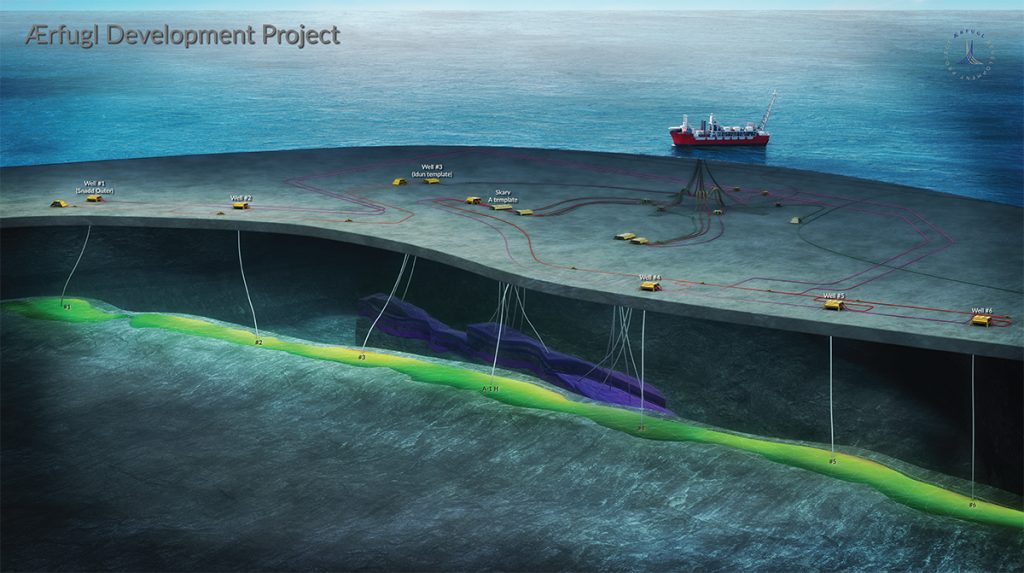Green light for Ærfugl well

In addition to test production from one well, Ærfugl is being developed in two phases, both with three wells that will be tied in to the Skarv FPSO for processing and further transport. One well will be drilled from an available well slot on Skarv, while the other five will be drilled from new satellites to be installed for Ærfugl. Illustration: Aker BP.
4/22/2020 Operator Aker BP is starting production from the second development stage (phase two) on the Ærfugl field in the Norwegian Sea. This will take place from the existing subsea template on the nearby Skarv field.
Development of the Ærfugl gas and condensate field is planned in two phases. The phase two development has been pushed forward because one of the wells can be drilled from an available well slot on one of Skarv’s subsea templates.
All production on Ærfugl will be tied into Skarv, which is located 210 kilometres west of Sandnessjøen in Nordland county. Aker BP and the other licensees are planning to complete phase one of Ærfugl, which consists of three wells, as well as to complete development of the remaining two wells in phase two.
Test production from Ærfugl started in 2013. The results from this have provided valuable information that has helped optimise the development.
The wellstream will be transported to the Skarv ship for treatment. The gas will be transported to the Kårstø terminal in Rogaland through an 80-kilometre pipeline connected to the Åsgard transport system.
The Plan for Development and Operation (PDO) estimates the Ærfugl gas reserves at about 35 billion standard cubic metres (Sm3). According to Aker BP, the PDO’s estimated investment cost for the overall development is about NOK 8 billion.
Ærfugl was proven in 2000. The PDO for the development was approved in April 2018. Export of gas from Skarv will be postponed so as to ensure capacity for the Ærfugl gas on the Skarv FPSO. This will contribute to increased oil recovery on Skarv.
Niels Erik Hald, NPD Assistant director Development and operations, says “it’s positive that utilising existing infrastructure and redistributing production capacity contributes to both increased oil recovery and value creation.”
Updated: 4/22/2020